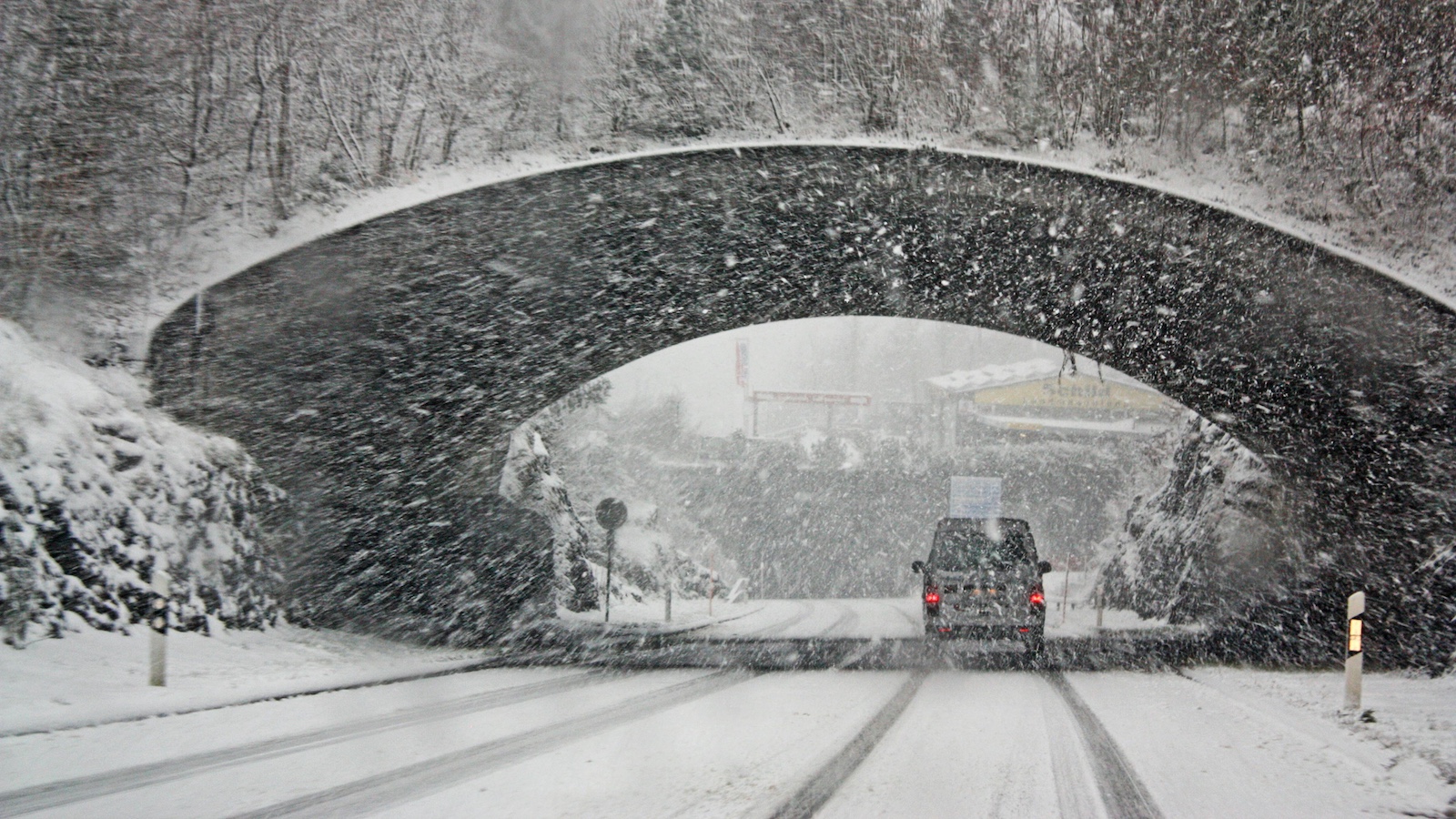A buzz phrase gaining momentum in the insurance market at the moment is "ecospheres of prevention." It’s about using smart devices to monitor for signs of impending loss events, and to then signal that to policyholders. For policyholders, this means events relating to your health, your house, your car and other such life contexts. It’s exciting stuff, a harbinger of a new insurance that focuses on preventing losses rather than simply paying out for them. Yet it is replete with issues of ethics and power, which I’ll explore in this post.
I should start by making clear that I’m a big fan of loss prevention. I spent several years immersed in the commercial side of it early on in my insurance career, with qualifications to match. Later on, I often got involved in related negotiations for personal lines policyholders with particular needs. So the idea of an ecosphere of prevention rings a bell with me.
The more I looked into this phrase, though, and weighed up the sector drivers being messaged around it, the more that bell began to sound like one of warning. Might I perhaps be over interpreting a trend still in its early stages? I think not, for it is already influencing the shape of insurance products and services. And, as academics often remind me, if what you see now seems still to be taking shape, address it now, for you’re almost certainly seeing only the tip of the iceberg.
Not Something New
These ecospheres of prevention are being used to position the sector as taking the lead in reducing losses. Yet is that really the case? It’s a mixed record.
On the one hand, personal policyholders have been calling for a long time for some form of recognition for taking the initiative on loss prevention. The sector’s response has instead been to position loss prevention measures as policy endorsements for above average risk properties, such as with locks for theft cover. Anything that didn’t fit into such endorsements was ignored, the argument being that there just weren’t the premium levels in, say, household insurance to warrant meaningful reductions.
On the other hand, the sector would argue that it was accepting that above average risk property at market rates because of that locks endorsement. In effect, this gave an inbuilt reduction in premium from what would otherwise be an exorbitant (go away) price. There’s some mileage in that, but I think in overall terms the personal lines market has seen loss prevention measures in a pot half empty way, despite policyholders urging a pot half full approach.
What I believe this adds up to is that it is not the financial dimension that has moved the retail insurance sector down this ecosphere of prevention road. The underlying, substantive reasons can be summed up as power and data.
The EOW Problem
I’m going to focus now on one particular use to which this ecosphere of prevention is being put, and that is around the "escape of water" peril, henceforth referred to as EOW. The last few years have seen a noticeable increase in debate about what is often referred to as the escalating problem of EOW claims.
It’s been explained to me that this is down to the age of what is being insured. Our housing stock is getting older, and the pipe work in it is just as bad. To this can be added the financial pressures that many families have faced since the financial crisis of 2008. The result is houses having pipe work that could be past its "best by" date. It’s an interesting narrative, with some mileage in it, but I’m not totally convinced that this seeming eruption of dire pipe work is so new a problem as it’s made out to be.
See also: COVID-19’s Once-in-a-Lifetime Opportunity
It doesn’t help that, so often, the chatter in the trade press about the EOW problem takes the form of sponsored articles co-written by an insurer and its leak detection partner. Not hard to see a rather massive conflict of interest there. So I’m prepared to give little more than a nod to this narrative, until some serious, independent data and analysis is available.
Enforcing an Old Policy Warranty
The narrative we actually hear little to nothing of is that of policy warranties. Every property policy has a maintenance warranty, requiring the policyholder to keep the property in good repair. If the policy holder doesn't, then the claim is likely to be turned down. After all, why should insurance pay for that lack of proper maintenance?
The problem, however, with the maintenance warranty is that it has not always been easy to enforce, and only then in an "after the event" situation. The sector felt it was invariably going to be on the defensive, only able to apply the warranty in the most extreme cases.
And this is where leak detection devices came in. Installed in the home, these devices signal to the policyholder and the insurer that a leak has happened, and, if the device is sophisticated enough, turn the water off automatically before much damage is done. Great, you may think, but remember that that device now puts the insurer in a much stronger position in terms of how it uses that maintenance warranty.
Able to detect even a dripping tap, the data streaming to the insurer now equips it with an evidence base for assessing the extent to which a loss was down to lack of maintenance or an insured event. It allows the insurer to apply the maintenance warranty earlier and more confidently. And it is the policyholder who then has to argument for the warranty not to be applied and the claim covered. Power has swung most definitely in the insurer’s favor.
A More Telling Narrative
Yet what’s wrong with that? many insurance people will ask. If the loss was down to maintenance, then great, the sector no longer has to pay out for the policyholder’s inadequate upkeep of the pipe work. And I recognize that argument, but then interpret it against the context of a wider and more telling narrative.
Consider what one leading European device manufacturer said recently about a partnership with an insurer: “We have created a blueprint for the introduction of water safety systems on a large scale to limit the risks for insurers.” And this from the same source: “a complete solution to eliminate the biggest cost driver in home contents insurance: water damage.”
That is the language of business performance. It is not the language of loss prevention. This is about deploying devices with the aim of “eliminating” EOW claims. And in the process, pushing the cost of those leaks onto the policyholder.
Again, I hear insurance people say, what’s wrong with that? We don’t pay for maintenance; it’s the policyholder who should. That’s right, but that’s a position predicated on a number of attributes about that device, about the data streaming from it, about the analytics analyzing it and about the human or system assessing it. Accuracy is one of them, the best interests of the customer another, and several others lie in between. The opaqueness with which these ecospheres of prevention are assembled makes it hard to just go along with the apparent efficacy of the decision chain set up by these devices. This brings us to the data that such devices produce.
Data Harvesting
Leakage device manufacturers often talk about how well their product can detect even a dripping tap, and about how well it can interpret the incoming signals. Some talk about tracking patterns of behavior within the house, simply through water use. This is more than a lot of flushing in the morning and evenings. It's about harvesting lots of data and using it to anticipate behaviors. This is hydraulic modeling and inferential analytics, using machine learning for anomaly detection. What’s more, it may not even be personal data. Inferential analytics bypasses the need for it.
What all this points to then are property utilities supporting lifestyle monitoring, through devices trained to detect down to the level of a drip of water. This is not an ecosphere of prevention. It is an "infosphere of assessment." In other words, the house as an informational environment, used by insurers to identify business opportunities.
This could put insurers onto a tightrope of compliance. The senior managers and certification regime requires U.K. insurers (and European insurers by similar directives) to always act in the best interests of each customer. The accountability risk that’s present here is in the form of a gross/net gap, between what insurers say and what they do. In other words, the actual outcomes that result.
That risk is going to become much more tangible for senior management functions as supervisory technologies are put to judging the outcomes emerging as a result of gross/net gaps like this. The reason for turning those supervisory technologies onto something as apparently mundane as escape of water detection is that it is just one of a series of devices being promulgated by insurers across health, life, motor, commercial equipment and household portfolios.
This device-led "infosphere of assessment" should be a central part of a regulatory review of data ethics in the insurance sector. While the current pandemic has delayed the FCA’s data ethics review, it has also allowed the regulator to weigh up the implications of device-driven insurance even more carefully. Insurers should do the same.
A Divided Market
Let’s move on and look at another aspect of this situation, again using EOW losses as an example. Leak detection devices fall into two categories. At the cheaper end, they detect but don’t turn off. At the more costly end, they do both.
At the more costly end, Grohe’s Sense Guard retails at around £400 and is being marketed by insurers to more affluent customers, for example those with second homes. Fine, but that could still be a tough sell in terms of value, even before you add in the cost of all the sensors. Yet that value needs to be seen relative to devices at the lower end of that cost spectrum (the ones that detect but don’t turn off).
What emerges is a near future that could look something like this: Affluent customers will be required to install a "detect and turn off" device in their second homes. They will also be encouraged financially to install a "detect and turn off" device in their main home, and in return get continuing EOW cover, probably a lower excess and several frills as part of the package.
Less affluent customers could face this choice: either a) install a detect only device and get some cover, but with a high excess, or b) with no device, face higher excesses, less cover and a firmer handling of that maintenance warranty.
See also: Step 1 to Your After-COVID Future
This is in effect moving the risk (and cost) of most EOW claims over to the policyholder. Of course, that’s not how this whole EOW movement wants to portray it, preferring instead to use words like water safety and water guard. In particular, the emphasis is on the reduction in losses as an all-'round good thing (which it is), rather than the reduction in cover, which is not a good thing.
The point, however, is this: If reasonable levels of EOW cover are only available in a device-oriented medium- to high-net-worth market, then the broad insuring public will feel let down. Times two. Stratification of the household market will step up, with actual cover (as opposed to loss prevention offers) being, for most people, harder and harder to acquire.
Summing up
The EOW water debate is moving in directions that risk undermining trust in the sector. In considering how to position themselves in relation to that debate, insurers might want to start with a small survey. At the next board meeting, ask each of the directors to confirm (anonymously, of course) whether, in the last five years, he or she has had their home’s pipe work tested and repaired by a competent trades person, for no other reason than it seemed about time to do so? Then ask the same question of technical underwriters, and this time ask them to evidence it.
I suspect few in either group will have done so. And that should tell you something. Is it asking too much of the sector, as the saying goes, to align the talk with the walk?
EOW has been a standard peril for so many, for so long, that something more imaginative, more innovative than so-called ecospheres of prevention is needed. Yes, engage in any necessary reform of EOW cover and the maintenance warranty. No, don’t use leak detection devices as a Trojan horse for household data.
Bring your customers with you: It will be worth it in the end.
You can find the article originally published here.








